RECENT
NOTICEBOARD

The Sixth Edition of the Kochi Muziris Biennale: A Rising Tide
by Gayatri Sinha
As curator of this year’s biennale, Nikhil Chopra addresses precarity and issues of survival by foregrounding the human body, while invoking hope and empathy through a strong community spirit.
24 Dec 2025

Placing “The Body at the Centre”: Interview with Nikhil Chopra
by Critical Collective
Emphasizing “process above objects,” Chopra speaks to Gayatri Sinha about curating a biennale that privileges labouring bodies, performativity and ephemerality.
24 Dec 2025
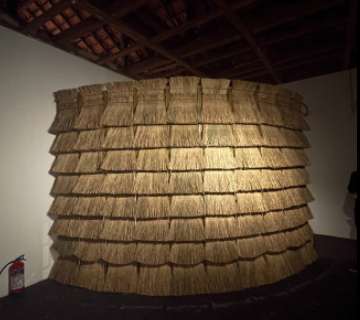
The Spectacular Arts Festival: Between Play and Polycrisis
by Uttaran Das Gupta
This year’s Serendipity Arts Festival follows the Indian and global trend in art festivals and biennales, where performativity becomes a spectacle to attract audiences, but is also used as a tool to a
24 Dec 2025

Collapsing Distances
by Gitanjali Dang
Salt Lines, the first solo exhibition in India of artist duo Himali Singh Soin and David Soin Tappeser, which listens to the desires of other than human worlds that slip beneath our perceptions.
24 Dec 2025

CC Shorts: Of Letters and Language
by Ornella D'Souza
Ashfika Rahman’s Of Land, River, and Body brings to light ethnic and communal violence in Bangladesh, while Ravikumar Kashi’s Shadows of Breath champions the loss of vernacular languages.
24 Dec 2025
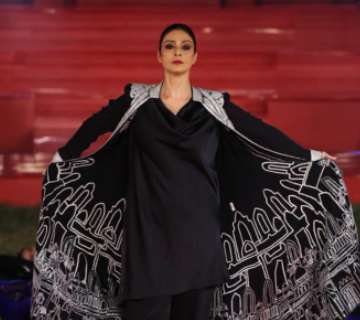
Abu Jani-Sandeep Khosla: Synonyms of Spectacle
by Gayatri Sinha
With the designer duo performance at Art Mumbai 2025, the event has taken a leaf out of the Bollywood fashion playbook to signal a new direction for art fairs.
24 Nov 2025
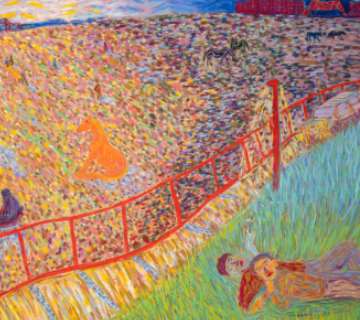
Winter 2025 Exhibitions at Experimenter, Kolkata
by Sneha Biswas
Radhika Khimji’s The Line is Time uses the phenomenology of geographies to engage with a sense of the uncanny in the natural world, while Sohrab Hura’s The Forest and A Winter Summer turn landscapes i
24 Nov 2025
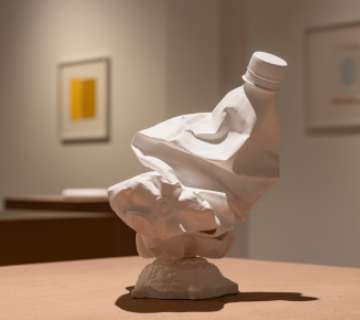
The World and Its Viewer in Anju Dodiya and Nicola Durvasula’s Works
by Mekhala Singhal
Two ongoing exhibitions in Mumbai -- Dodiya’s The Geometry of Ash and Durvasula’s Abstracts -- though different in style and content, commonly urge viewers to reflect on their interactions with everch
24 Nov 2025
ART, MEDIA AND LAW

Tinkering with the Aura Machine: Investigating AI Gimmicks in Cinema
by Noopur Raval
2025 saw the re-release of Aanand L. Rai’s 2013 romantic tragedy, Raanjhanaa, with a revised AI-assisted happy ending, forced on by producers, opening up new debates around technological gimmicks and
24 Dec 2025

Art, AI and the Postmodern Condition
by Arundhati Bhan and Sachin Sharma
The controversy around the artwork of Abhay Sehgal has renewed the discussions of plagiarism, citation and inspiration. In the age of AI, what becomes of postmodern concepts like kitsch and pastiche?
24 Oct 2025

Operation Sindoor and The Fog of War
by Maya Mirchandani
The recent Indo-Pak armed conflict has highlighted the trappings of the mediatized world where accuracy is easily traded for misinformation, context for propaganda and gravity for spectacle.
25 Jul 2025

Media, Censorship and the Internet: The Private Intermediaries’ Chapter
by Akshaya Kumar
The latest move towards regulating the internet through private intermediaries has turned censorship from a defensive strategy to an offensive weapon in the hands of the government.
25 Jun 2025
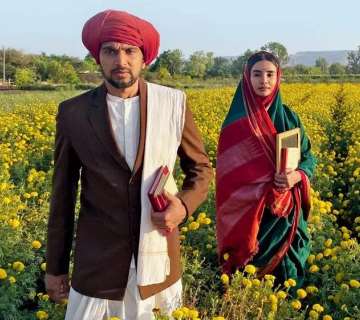
Caste, Language and Censorship around Anant Mahadevan's Phule
by Sachin Sharma
The ironic controversy around the biopic on Jyotirao and Savitribai Phule has ensured that the fate of a film on Dalit politics continues to be dictated by the caste hierarchy it challenges.
25 Apr 2025

The Alternate Media Networks of Community Radio
by Critical Collective
Community radio stations such as Radio Mewat in Nuh, Haryana, have developed effective means to address local issues and marginalized groups in ecologically and communally fraught regions of India.
25 Mar 2025

What is the Language of Dissent without the Courage to be Be-Khaufi?
by Sneha Biswas
Be-Khaufi challenges the status quo with personal stories, poetry, and political insight and explores the intersections of gender politics and fearlessness.
26 Dec 2024
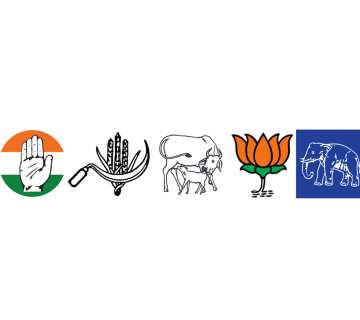
Electoral Symbols, EC and the Visual Terrain of Indian Elections
by Sruthi Muraleedharan
A study of the shifting political, ideological and aesthetic ideas and agendas reflected in the symbols allotted to prominent Indian political parties by the Election Commission since 1951.
26 Jun 2024
ART AND DESIGN

Textile Conversations at IIC: A Tribute to Jasleen Dhamija
by Arundhati Bhan
A recent seminar brought together scholars, revivalists and artists in the field of Indian craft, whose practices mirror and take forward Dhamija’s vision and legacy.
24 Nov 2025

Gouri Bhanja and the Art and Design Movement in Santiniketan
by Rituparna Basu
Bhanja drew on folk traditions from rural Bengal and the ornamental fine arts in Kala Bhavan to develop a new language of alpona that found its way into her paintings and other art forms.
26 Sep 2025

60 Years of the Crafts Council of India: Ornella D'Souza talks to Gita Ram
by Ornella D'Souza
As the current Chairperson of CCI, Ram discusses the organization’s past, present status, and future goals towards safeguarding and reviving various regional artisan and crafts clusters in India.
25 Jul 2025

Bengal's Textile Histories Gain New Visibility
by Archi Banerjee
Textiles from Bengal: A Shared Legacy, organized by Weavers Studio, Kolkata, refocuses attention on the region as a rich hub in textile production, trade and cultural cosmopolitanism.
25 Mar 2025

Exploring India’s Textile Traditions as its Pehchaan
by Arundhati Bhan
An ongoing show highlights Indian textiles and techniques from the historic and contemporary works from the collections of the National Museum and the Devi Art Foundation.
10 Feb 2025

The Performative Scroll Traditions of Jadopatuas
by Rahul Majumder
An essay exploring the disappearing traditions of the Jadopotuas, itinerant storytellers and scroll painters deeply tied to Santhal rituals and folklore.
27 Jan 2025

The Symbolism of Sovereignty in India according to Iconography
by Jeannine Auboyer
The writer looks at the symbolism of sovereignty in India, as expressed in art and sculpture, and the significance of the parasol within this iconographical lexicon to represent the cakravartin.
25 Nov 2024

Narrativizing Fibre and Textile
by Arundhati Bhan and Radhika Tulsian
Apparao Galleries’ latest textile exhibition, Entwined Edition 2, centralizes fabric as a medium of expression, by weaving a tale of cloth and fibre around notions of the body, mind and soul.
23 Aug 2024
art history

From Kaveri Queen to Potomac Bronze? Sembiyan Mahadevi as Patron
by Prathik Murali
This essay examines the Chola queen’s contributions to South Indian temple architecture and bronze sculptures through epigraphic evidence, and highlights the local geography and artisanal networks that aided the flourishing of this art.

Coastal Exchanges: Jain Manuscripts and Persian Aesthetics in Medieval Gujarat
by Stuti Gandhi
Gujarat’s 15th-century port cities were hubs of trade and image-making. Through Indian Ocean routes, ultramarine, gold and Persianate styles and forms entered Jain manuscripts, reshaping long-established traditions into cosmopolitan visual cultures.

Kalamkari: A Glorious Legacy of the Coromandel Coast
by Malini Divakala
A close look at the natural resources of the Krishna Delta and the various political and cultural influences of the region that have shaped the complex tools, techniques and motifs of this rich dyed and printed textile tradition.

Votive Lamps from Cochin
by O.C. Gangoly
The archival essay documents and analyzes the aesthetic qualities of votive oil lamps from the coastal city of Cochin, highlighting their intricate cast-metal forms and devotional use in South Indian temples.

Portraits and Power: Style, Circulation and Kingship at Jaipur
by Shailka Mishra
A study of 18th-century royal portraits with records from the painting workshops that produced them reveal how these images helped articulate political authority, gain religious merit and shape court cultureA study of 18th-century royal portraits with records from the painting workshops that produce

New Inquiries into Chattri Paintings and Stencils from Shekhawati
by Saumya Agarwal
This investigation into the links between motifs in 19th-century memorials in the Rajasthani merchant town and stencils from the region in the collection of MAP, Bengaluru, may provide valuable insights into local artistic practices, and offer resistance to the renaming of these sites by a burgeonin

The Idea of Samarpan in Illustrated Sursagar Manuscripts from Mewar
by Hitangi Brahmbhatt
A close study of a few paintings that capture the key idea of surrender to the Almighty Krishna, as promoted in the verses of Surdas and the Pushtimarg tradition.

Revelations from an 18th-Century Bhagavata Purana Scroll at DAG
by Arundhati Bhan
This illustrated mythological manuscript becomes a rich visual and textual representation of the various aesthetic, devotional and political influences that shaped scroll-making in early modern regional courts in India.
CINEMA/OTT

Love, Labour and Loss of Cinema
by Sachin Sharma
Duniya Parchhaiyon Ki, curated by Ashish Rajadhyaksha at Arthshila, New Delhi, uses posters and other kinds of film memorabilia to explore the material and affective afterlives of popular Hindi cinema within industrial landscapes and cinephilic pursuits.
_516391148_2316.jpg)
All We Imagine as Kani
by Swapna Gopinath
Straddling the worlds of theatre and films, Kani Kusruti has used her unusual and confident onscreen and offscreen personas to establish herself as a sensitive, politically aware woman artist.

Ashok Kumar, the Anti-Hero
by Critical Collective
Unlike most of his male contemporaries, Kumar was unafraid to shape his stardom by embracing a range of morally ambiguous roles across more than four decades in Hindi cinema.
_510021409_2319.jpg)
Manoj Bajpayee: Gen Z's Favourite Common Man
by Sreya Mitra
Season 3 of The Family Man marks the enduring success of Bajpayee as a OTT actor-star, whose nuanced performances as a flawed character in an espionage narrative, curbs Bollywood conventions to appeal to new audience expectations.

From Shy Hero to Garam Dharam: The Multiple Masculinities of Dharmendra
by Sachin Sharma
The senior doyen of Hindi cinema, who turns 90 next month, is celebrated for the mix of romantic bashfulness and rugged machismo that he brought to films across five decades.

Becoming Zubeen Garg: The Archetype of Assamese Culture in Transition
by Mukul Haloi
Over the last three decades, the much-loved musician, actor and director built a persona and enjoyed a fandom that successfully adapted to various changes within the regional film industry and brought solace and unity to a conflicted land.
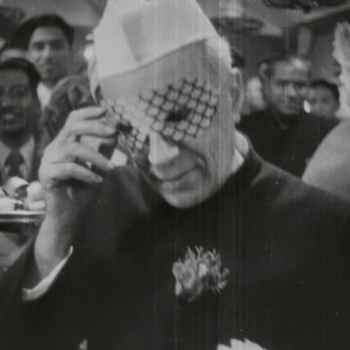
Cinema and Politics: Of the State, For the State
by Ritika Kaushik
No longer required to be the sponsor and patron behind filmmaking, the state now seeks to be Indian cinema’s true subject and its intended spectator.
_2140911770_2308.jpg)
One Who Gave Song to the Songless
by Sayandeb Chowdhury
A centenary tribute to the lyricist and composer Salil Chowdhury, whose polyphonic contributions within and beyond cinema were always attuned to the rhythm of the soil.
Lens Based Practices

Sensitive, Yet Detached: Sondeep Shankar
by Ornella D'Souza
The well-regarded Indian photojournalist revisits his 45-year career, discussing the opportune moments that gave him access to historic events and subjects, like Operation Bluestar, the Gujarat riots, and the arrest and release of Phoolan Devi.

When is a Wedding Video?
by Sachin Sharma
Moving from an amateur affair with early video technology, this format has become more professional and Bollywoodized in recent decades, even as smartphone footage and social media spoofs critique these aesthetics.

Pablo Bartholomew and Prashant Panjiar Remember Sebastiao Salgado
by Gayatri Sinha
A tribute to Salgado’s wide-ranging practice by two leading Indian photojournalists.

The Dreamscapes of Aishwarya Arumbakkam
by Sneha Biswas
The artist opens up about her slow, haptic approach to photography and her engagement with themes of memory, intimacy, exile and belonging.

CAMP's Practice of Image-Making and Archiving
by Bedatri D. Choudhury
A review of MoMA's ongoing show, Video After Video, highlights how the Mumbai-based artists studio deals with the complexities of an ecosystem of layered images and recorded footage that has infiltrated our daily lives.

Marc Riboud Casts His Humanist Eye on a Nascent Nation
by Shan Bhattacharya
A recent exhibition in Kolkata revisited the well-known photojournalist’s documentation of the Bangladesh Liberation War, highlighting his compassionate, humanist gaze.

Tarun Bhartiya (1970-2025): The Vulnerable Observer
by Sachin Sharma
This tribute to the Indian journalist, photographer, filmmaker and activist, focuses on his efforts to understand and represent the complexities of life in the Northeast and the rights of its people.

Review: Shadows in the Sky by Protick Sarker
by Sachin Sharma
Sarker Protick’s exhibition situates itself at the thresholds of domesticity, motherhood and modernity. While it challenges the state of being in between, there is a lack of conceptual movement.
CC ARCHIVES

Atul Dodiya’s Homage to the Golden Years of Hindi Cinema Music
by Anindo Sen
In Radio Ceylon Paintings: Vol. I, the artist retraces his love for older Hindi cinema through portraits of yesteryear poet-lyricists and singers, with frozen scenes from song sequences in movies.

Jagdish Ji: The Inner Eye
by Jyotindra Jain
Remembering the renowned Indian art collector, Jagdish Mittal (September 16, 1925 - January 7, 2025), whose works are preserved at the Jagdish and Kamla Mittal Museum in Hyderabad.
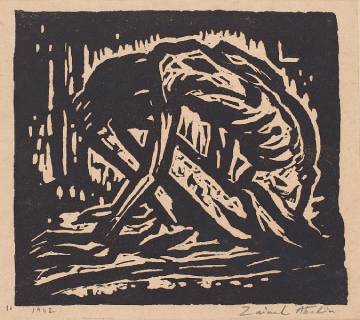
The Art of Zainul Abedin
by Richard Wilson
An archival essay highlighting the oeuvre of Zainul Abedin, known for his contribution to early Indian modernism portraying the sociopolitical turmoil of the 1943 Bengal famine and the Partition.

And Everything In Between: The Second Islamic Arts Biennale
by Gayatri Sinha
In the midst of a broader regional instability, the biennale signals faith and hope with the finest achievements in Islamic art.

Mithu Sen on I Am Ol Chiki
by Mrinalini Vasudevan
The artist discusses her latest public art project, created for the Bengal Biennale Santiniketan edition, that aims to revive Santali language, script and culture.

Reconfiguring the Human Visage
by Arundhati Bhan
Curated by Yashodhara Dalmia, Gallery Threshold’s multi-artist exhibition, ‘Trans-formative Vision’, navigates the landscape of figurative art across artistic, social and cultural histories.
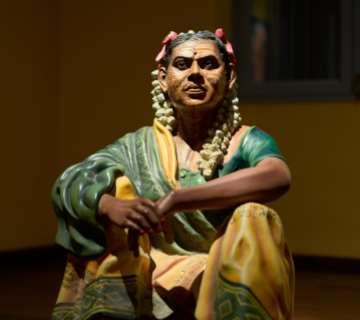
George K in Conversation with Ravinder Reddy
George K. discusses his Aravani series, on display at the 2024-2025 Bangkok Art Biennale, and his broader practice that engages with alternative gender and sexuality.
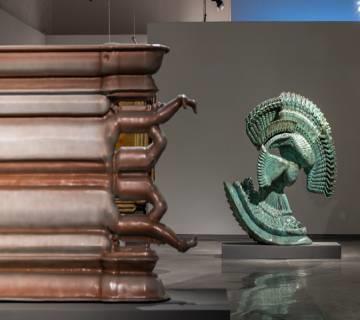
The Consensual Hallucination of L.N. Tallur
by Shankar Tripathi
In Tallur’s solo exhibition, Neti-Neti, data is transformed into a colour-coded landscape of bronze and metallic forms, and the glitch that ruptures through traditional figures becomes the new code.
MUSEUMS

Questions around the National Maritime Heritage Complex at Lothal
by Tanishka Kachru
Could the potential of narrative exhibition design at this site get lost as it is increasingly mobilized to address political issues?

Delhi's Sunken Museum
by Arundhati Bhan
The less-than-a-year-old Humayun's Tomb Museum sets new standards for the site-specific museum in India, attracting visitors with its tactile displays and audio-visual evocations of the local surroundings and Mughal history.

Museumizing a Faith: In Conversation with Kevin Fernandes and Natasha Fernandes
by Mrinalini Vasudevan
Through a discussion of the history and the curation of specific objects at the Museum of Christian Art, Goa, Kevin and Natasha provide insights into the strengths and limitations of this institution.

New Kid on the Block: Mumbai’s Museum of Solutions
by Neerja Deodhar
The institution widens the scope of a children’s museum, celebrating modes of learning that find limited space in traditional schooling, and viewing children as agents of change, capable of confronting social and ecological issues.

Museum Making in India Today: Conversation with Eka Resources
by Namrata Ghosh
New and upcoming museums in the country reveal how they incorporate Indian design practices and build on collaborations between local and foreign firms.

Kolkata Police Museum
by Namrata Ghosh
Tracing police history from the colonial to the early 2000s, the museum provides a glimpse into the formation, evolution and functioning of the city police while raising questions about the politics of representing institutional histories.
_1403728434_558.jpg)
Interrogating India’s First Museum Biennale at the Bihar Museum
by Namrata Ghosh
The article raises important questions about the use of the word ‘biennale’ while examining the impressive museum the event is located in.

Representing a History of Violence: The Partition Museum in Delhi
by Umara Zainab
The recently inaugurated museum highlights Delhi’s experience of violence and displacement in the wake of the 1947 Partition.
Curators and Exhibitions

And/Or/Both: Kaiwan Mehta's World, But No Home
by Rohan Shivkumar
Mehta turns to the shifting spaces of urban neighbourhoods, bringing together a variety of artworks that engage with the interplay between private and public lives and habits.

Thresholds of Becoming: 16 Artists Try To Step Across
by Sandhya Bordewekar
A recent exhibition at Ahmedabad's Conflictorium Museum delves into the various 'thresholds' that mark artistic practice, urban history and memories of home.
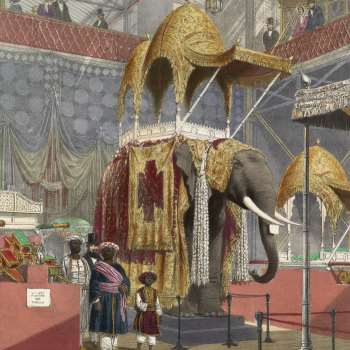
Nation as Exhibit: The Long Shadow of T.N. Mukharji
by Gayatri Sinha
Remembering T N Mukharji, the first Indian curator at an art institution, known for his internationally mounted exhibitions in the 1880s.

Artists and the Weather Station
by Namrata Ghosh and Radhika Sharma
28° North and Parallel Weathers brings together art, science and digital intervention in tracking weather changes in regions along latitude 28° North.

In Search of New Horizons: Muhanned Cader's Island in the Sky
by Mrinalini Vasudevan
The landscapes captured in the Sri Lankan artist's first solo exhibition in India become metaphors for themes of home, belonging, exile and multicultural identities.
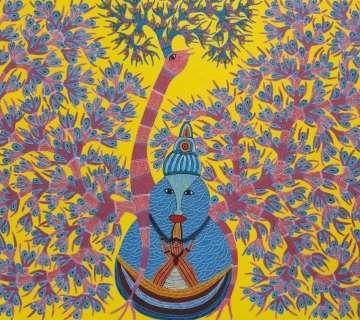
Revisiting Another Master: Ram Singh Urveti
by Umara Zainab
The myths and legends of the Gond community have found new life in the painterly canvas of Urveti over the last three decades.

When Artists Reimagined ‘The Waste Land’
by Radhika Sharma
Art Heritage’s exhibition revisits T. S. Eliot’s classic, Reimagining The Waste Land, through the works of five contemporary Indian artists.

Crisis in the Critical Zone
by Namrata Ghosh
This travelling exhibition seeks to draw attention to the ever-growing challenge of climate change by focusing on the fragile environment of the critical zone that sustains all life on Earth.
artists

Revisiting Pop and Play with Anjum Singh
by Meera Menezes
A recent book commemorates the work and legacy of Singh, who passed away in 2020, but is still remembered for her experimentation with materials and elements of play that she brought to works that engaged with failing human bodies and cities.
_1808097364_2291.jpg)
Me, Myself, and You
by Keith Wallace
Wallace reflects on Sunil Gupta’s photography, that engages with the queer community in India, England and America, capturing moments of intimacy, friendship, but also darker sides of HIV afflictions.

In his birth centenary year, a new Satish Gujral Work
by Gayatri Sinha
An unseen drawing, The Condemned by Satish Gujral, emerges in a private collection and adds to his cache of extraordinary Partition works.

Of history, context and location:
by Ella Datta
An essay navigates how elements of memory, myth and socio-political commentary in the artist’s paintings intertwine personal experiences with broader collective histories through the lens of imagination.

Arriving at The Object Craftsperson and Seamster
by Paula Sengupta
Partha Pratim Deb’s career as an artist and educator from the late 1960s was defined by an interdependent relationship between his practice and academics, evident in his experimental approach and diverse choice of media.

Towards Cutting Edge Art: Definitive Attempts
by Pushpamala N
Drawing from sociopolitical changes and a shift from traditional forms of expression, the artist reflects on her oeuvre against the backdrop of ‘cutting edge’ practices among Indian artists in the 1990s.
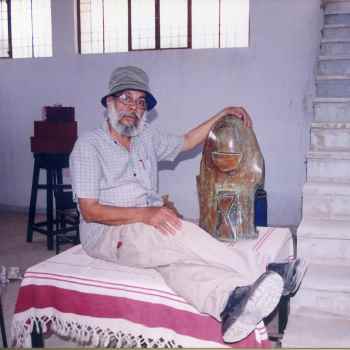
Himmat Shah: Sculpting Civilisational Connections
by Gayatri Sinha
This tribute to the renowned Indian artist (1933-2025) reflects on how his sculpted heads imbued with the unity of human experience, have been conferred with a lasting grandeur.
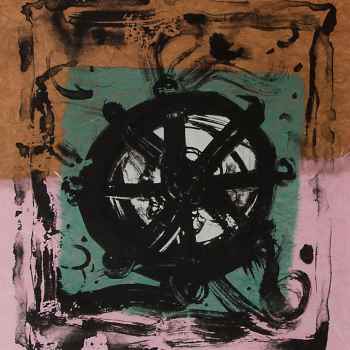
Devraj Dakoji: The Master Printer
by Lina Vincent
A new retrospective show, Signed, Lower Right: Devraj Dakoji, traces the artist’s training in and experiments with printmaking over the last five decades.
Artists Groups and Collectives

Drifting Threads: Cholamandal Artists’ Village over fifty years
by Ashrafi S Bhagat
Ashrafi Bhagat traces the past, present and future of the Cholamandal Artists' Village in Chennai.

How to Feel a Leak?
by CAMP
CAMP elaborates on their work, THE RADIA TAP(E)S as part of The Ungovernables, New Museum, New York Triennial (2012).

CONA: Points of Reflection
by Hemali Bhuta
Hemali Bhuta on the founding of CONA as a pedagogical structure for artists.

New Group: In conversation with Amitava Das and Mona Rai at New Delhi, April 23, 2014
Amitava Das and Mona talk about the formation of the New Group in 1974.
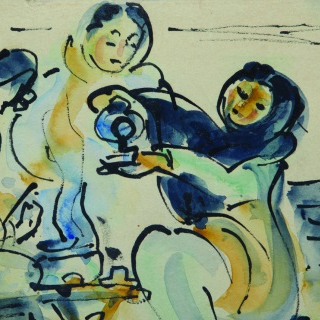
The Calcutta Group - Its Aims and Achievements
by Prodosh Das Gupta
Prodosh Das Gupta highlights the premise of founding the Calcutta Group in 1940.
Indian Society of Oriental Art
by James H. Cousins
Artists Conversations

A Conversation on Caste, Labour and Art with Vikrant Bhise
by Critical Collective
The young Bombay-based artist discusses his engagement with Ambedkar’s teachings and the stories of the Dalit community depicted in his paintings.

Architectures of Momentum: In Conversation with Rameshwar Broota
by Critical Collective
The artist’s oeuvre has been a long-standing testament to how he addresses the passage of time in defined forms and abstractions.
_2086054073_537.jpg)
On 1Shanthiroad: In Conversation with Suresh Jayaram
by Mallika Visvanathan
As 1Shanthiroad Studio and Gallery completes 20 years, Suresh Jayaram speaks about the nature of the space and its future in a post-pandemic world.

Conversation with Gigi Scaria
by Sohorpem Kazingmei
The artist highlights the centrality of city landscapes in his work, while speaking of his experiments with printmaking as part of his artistic process.

On Nature and Abstraction: An Interview with Ganesh Haloi
by Namrata Ghosh
The artist talks about how his early life and experiences greatly influenced his practice.

how many songs from a single note?
by Shaunak Mahbubani
Shaunak Mahbubani interviews artist, Rah Naqvi about her recently closed exhibition, how many songs from a single note?

Today is Better than Yesterday: In Conversation with Surekha
by Mallika Visvanathan
Surekha speaks about her recent works displayed at 1Shanthiroad, Bengaluru, made in response to the feelings of stagnation and loss which characterized the first waves of Covid-19.

Pieces of Home: In conversation with Tanmoy Samanta
The artist discusses his latest series of works created in the midst of the pandemic, which reconsider the ideas of home and earthly existence, using pigment, rice paper and shape-shifting collages.
ON GENDER

Kamini Kaushal: A Natural Actor and Reluctant Star
by Critical Collective
Unlike many of her female contemporaries who constantly chased fame and glamour, Kaushal worked selectively in Hindi films, leaving her mark through her versatility and natural acting style, and later through her writings for children’s stories, puppetry and TV shows.

Helen and the Possibilities of Women in the Public Sphere
by Sachin Sharma
Well-known for playing the vamp, dancer, moll or other woman in Hindi cinema of the 1950s and ’60s, Helen represented an assemblage of the desires, fears, prejudices and possibilities associated with public womanhood in post-independent India.

The Bai Tradition in Indian Classical Music
by Shailaja Khanna
The lives of Anjanibai Malpekar, Kesarbai Kerkar and Mogubai Kurdikar reflect the struggles faced by early female classical vocalists in India in gaining social and creative recognition for their contributions.

Twilight Stars Shining Bright
by Ratnottama Sengupta
The last few months have seen Aparna Sen, Sharmila Tagore and Rakhee Gulzar return to the Bengali screen in roles that prioritize their strong, layered performances over youthful glamour.

Are You My Sister: Art and Fundraising for Feminist Solidarity
by Anindo Sen
Sister Library’s recent exhibition brought together the works of 27 women artists, illustrating various aspects and challenges surrounding gendered identity in the Indian context.

Mumtaz Begum: A Courtesan Who Challenged the Court
by Sachin Sharma
The story of Mumtaz Begum, mistress of Tukoji Rao Holkar, who later became the subject of an infamous legal case and film, reveals the difficult negotiations brokered by women in cinema in early 20th-century India between competing political forces.

Clothes that Make an Indian Female Politician
by Kamayani Sharma
Indian women political leaders use the short haircut and glamorous power sari to enfashion identities that complicate patriarchal and caste mores around femininity.

Between Freedom and Confinement
by Arundhati Bhan
Unseen Shadows, a new exhibition by Richa Arya and Deena Pindoria, delves into narratives of resilience, the limitations of materiality, socio-political erasure, and the undervaluation of women's work.
AESTHETICS THEORY
_571169570_1599.jpg)
Anandavardhana's Treatment of Aprastutaprasamsa
by P. K. Narayana Pillai
The essay discusses the degree of novelty in Anandavardhana’s theory of dhvani, and the rhetorician’s opinions regarding the contributions of his successors towards the theorization of dhvani. (1957)

A Critical Survey of the Ancient Indian Theatre Accordance with the Bharata Natyasastha and its Commentators
by Subba Rao
Construction of ancient Indian theatre, as propounded in Bharata's Natyashastra is interpreted in an objective manner by comparing the theoretical with the practical aspects. (1953)

An Outline of Indian Aesthetics
by Nagendra
On the various speculations pertaining to the nature of Beauty in the Indian context and the contribution of Indian poetics and philosophy in its formulation. (1934)

The Dynamism of the Indian Concept of Rasa
by K S Ramaswamy Shastri
On the concept and origin of Rasa in Indian aesthetics and the development of its elements. (1935)
_1967359846_1423.jpg)
Some Modern Critics and Ancient Texts on the Aesthetic Value of Hindu Images
by N.V. Mallavya
On the aesthetic and iconographical aspects of ancient Indian sculpture as outlined in the Agamas and Shastras. (1942)
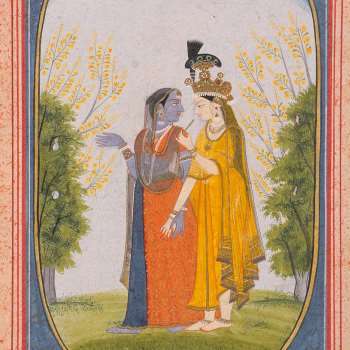
Anandavardhana’s Treatment of Pratibha in Relation to Dhvani
by K. Krishnamoorthy
On the concept of Pratibha or creative imagination brought about by the agency of Dhvani. (1950)

Peculiarities in the Alamkara-Section of the Agni-Purana
by Suresh Mohan Bhattacharya
On the unique modes of treatment accorded to Alamkara and its constituent elements in the Agni Purana. (1960)

Studies in Dhvanyaloka, the Adivakya in Dhvanyaloka
by V.A. Ramaswami Sastri
On the importance of dhvani in communicating the essence of emotion inherent in poetry and drama. (1955)
CURATING SOUTH ASIA

Being Alive: Anthropological Enquiries into Art
by Arundhati Bhan
Iram Art's group exhibition explores broad themes of cultural hybridity and relativism, indigenous perspectives and ecological degradation.

Review: The Shape of the Wind is a Tree
by Radhika Tulsian
This FICA exhibition, in collaboration with Royal Enfield, brought together artists and communities from the eastern and western Himalayas, preserving indigenous traditions and identities.
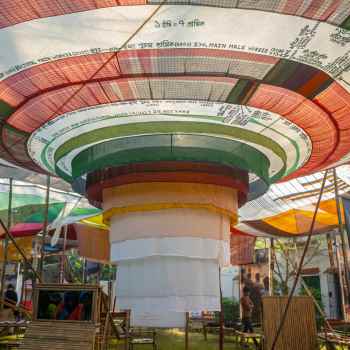
The Bengal Biennale Debut in Santiniketan
by Soumik Nandy Majumdar
A look at the highlights from the inaugural edition of the Biennale and the new arts spaces it has opened up, beyond Kala Bhavana, in Tagore’s campus town.

Photographic Archives and Forced Migration
by Rituparna Roy
Dayanita Singh’s Museum of Tanpura, Paula Sengupta and Sujoy Das’s Into Exile: The Tibetan Predicament and Pradip Das’s Hridaypur engage with archives of memories and historical loss.

Indian Democracy under Scrutiny
by Virginia Whiles
A review of the Barbican’s exhibition, The Imaginary Institution of India: Art 1975-1998, which features 30 artists’ responses to the postcolonial nation-state’s failed promises of democracy.
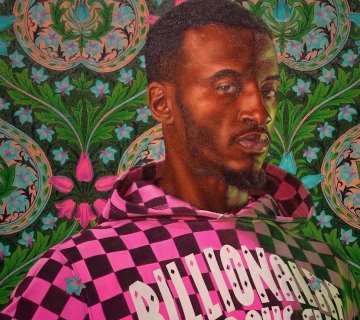
Entangled Pasts, 1768-Now: Art, Colonialism and Change
by Deeksha Nath
A recent exhibition at London’s Royal Academy explores the legacies of Britain’s imperial past, and the role art played in shaping narratives of empire, enslavement and resistance.

Memory Fields in the Art of the Global South: A Review
by Gayatri Sinha
Andreas Huyssen's deeply perceptive reading of key artists creates a transnational view of the recollection of trauma and its invocation in contemporary art.

Parvez's performative gestures:The subversion of the capitalist art economy
by Deeksha Nath
The author writes on performance and lens based artist Parvez’s seven month long project in Switzerland questioning the presumptions around audience interaction and the sites of art presentation.
CC Books
_445577399_2313.jpg)
Books Received and Reviewed
by Ornella D'Souza and Shivangi Jalan
A look at two recent publications by Gallery Maskara, which deal with T. Venkanna’s depiction of bodies, eroticism and violence, and Bimal Maskara’s street photographs of 1970s’ Bombay and Calcutta.

Its Time is Now: Review of Geeta Kapur’s Speech Acts
by Parul Dave Mukherji
Placed in the context of current national and global cultural politics and contemporary art theory, Kapur’s latest book foregrounds her renewed engagement with the category of the avant-garde from the position of the Global South.

UNderstanding Mithu
by Meera Menezes
A new monograph on Mithu Sen offers insights into her artistic journey but also highlights the impossibility of pigeonholing her practice.

Book Review: Photographing Indian Monuments, 1855-1920
by Arundhati Bhan
Sudeshna Guha’s edited accompaniment to the DAG show of the same name looks at the role photography played in reinforcing and challenging colonial documentation of Indian heritage.

Book Review: The Right to Look
by Sachin Sharma
The book explores the multifaceted nature of Indian photography through a structured examination of how the medium interacts with the body, identity and perception.

Book Review: Photo-Attractions
by Malavika Karlekar
Ajay J. Sinha’s latest book unearths the performance-based collaboration between Indian dancer Ram Gopal and American photographer, Carl Van Vechten.
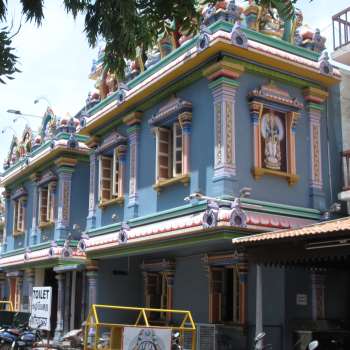
Book Review: History of Urban Form of India
by Sandhya Bordewekar
Pratyush Shankar's book looks at indigenous models of urban planning that emerged in response to local geographic, historical and socio-economic orientations.

Doing History at a Slant: Remembering the Kasauli Art Centre
by Arushi Vats
A review of Belinder Dhanoa’s Kasauli Art Centre (1976-1991)
CC REFERENCE

Ismat Chughtai’s Lihaaf, through Bhasha Chakrabarti’s Gaze
by Neerja Deodhar
Chakrabarti’s latest show, Karvat, brings together her long fascination with the iconic Urdu story about queer desire, and her own engagement with cloth and lovers in domestic settings.

Where Durga Masquerades as Empress Victoria
by Tapati Guha-Thakurta
In a perceptive reading of a 2024 puja pandal, Tapati Guha-Thakurta provides a close study of the colonial and postcolonial statuary against the changing socio-political milieu of Kolkata.

Sahmat: Moments in Collapse
by Umara Zainab
The exhibition is an urgent intervention for critical thought, an exercise in remembering and creating a distinct point and space to force us to imagine a different future.

Karbala and Other Symbols-M.F. Husain
by Gayatri Sinha
Husain's Karbala, bearing its message of persecution and painted during the Gulf War returns with extraordinary prescience, in its staging at the Venice biennale.
_316998727_602.jpg)
Imagining Liminality: The Flux at India’s Cultural Thresholds
by Neerja Deodhar
The unsaid and the hidden-across architecture, history and time-assume centre stage at an exhibition hosted by Mumbai’s Nita Mukesh Ambani Cultural Centre.
_229437969_597.jpg)
Lipstick Stories: ‘Middle-Class’ India Gazes at Itself
by Neerja Deodhar
Roshan Chhabria’s latest solo show employs observational humour and a kitschy style toreflect on the common man’s aspirations and insecurities.
_2055215019_593.jpg)
A Centenary Tribute to K.G. Subramanyan
by Vasudha Chatterjee
Remembering one of 20th-century India's most prolific and prominent modernists, who was a renowned artist, writer, teacher and institution builder.

Ameen Sayani (1932-2024): The South Asian Radio Star
by Vebhuti Duggal
The essay looks back at Ameen Sayani's stardom in light of his passing, and about the legacies of his flagship programme, Binaca Geetmala.


